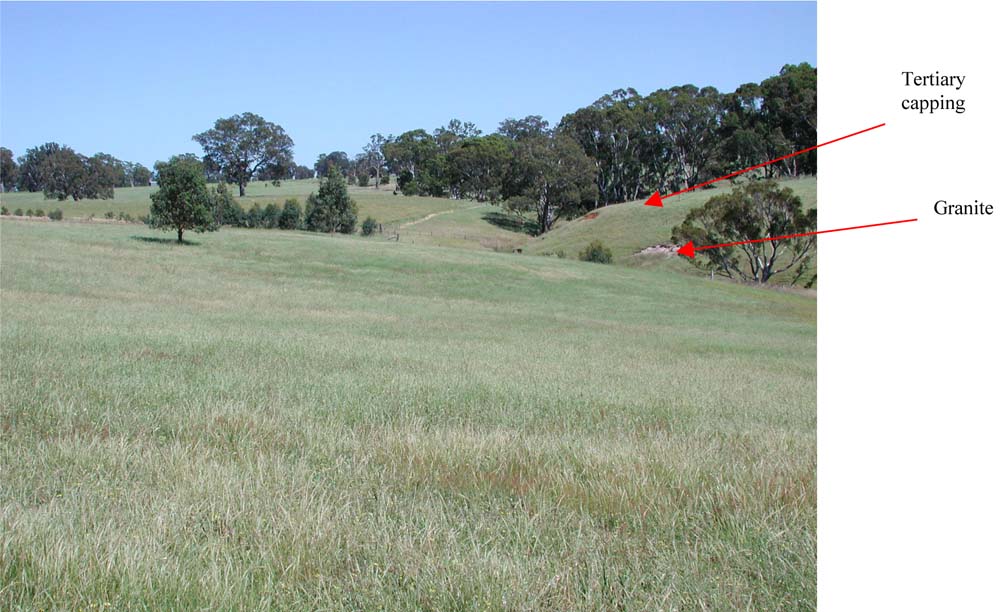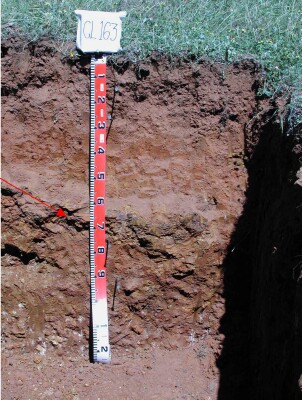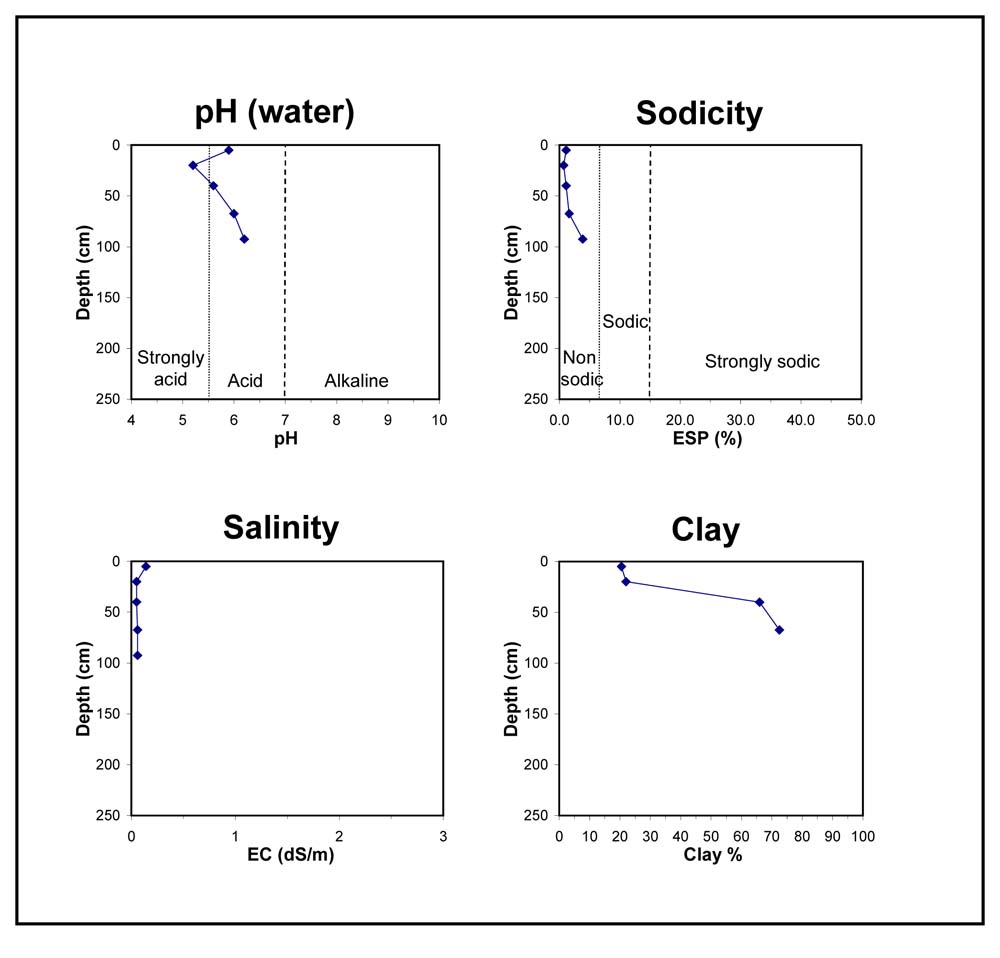GL163
| Site: GL163 | Land Unit: Dundas Sedimentary |
| Aust. Soil Class.: Haplic, Petroferric, Brown CHROMOSOL (confidence level 1) | |
 | General Land Unit Description: This site is situated on low hills with a Tertiary capping. Due to restrictions of scale, this site is not mapped as the Dundas land unit. It has been used to illustrate the variability in the parent material in the dissected landforms in the north-west of the study area. The most distinguishing feature of this soil is a thin petroferric pan. The pan occurs at 60 cm, which is slightly deeper than is common. Underneath the pan there is a band of heavy clay that overlies Tertiary quartz river gravels, which have proven to be gold bearing. The river gravels are not necessarily common. The petroferric pan may be the result of a fluctuating watertable. |
Site Description:
| Slope: 8% | Geology: Tertiary marine sandstone |
| Landform pattern: Low hills / rises | Position in landscape: Upper slope |
| Internal drainage: Moderately well drained |
Soil Profile Morphology
| A11 | 0-15 cm | Reddish brown (10YR5/4) fine sandy loam, moderate subangular blocky structure (5-20 mm), weak consistence when dry, pH 5.1. Gradual transition to: |  |
| A12 | 15-30 cm | Yellowish red (5YR4/6) fine sandy loam, weak subangular blocky structure (2-10 mm), weak consistence when dry, many medium subangular ferruginous nodules, pH 5.4. Abrupt and wavy transition to: | |
| Subsoil | |||
| B21 | 30-60 cm | Yellowish red (50YR4/6) medium clay, very few fine faint yellow mottles, weak subangular blocky structure, firm consistence when dry, few small subangular ferruginous nodules, pH 5.9. Sharp and wavy transition to: | |
| Pan | 60-75 cm | Very strongly cemented continuous ferruginous pan. Sharp and wavy transition to: | |
| B22 | 75-90 cm | Red (2.5YR4/6) heavy clay, many coarse prominent yellowish brown (10YR5/6) mottles, moderate polyhedral structure, strong consistence when dry, very few fine ferruginous nodules. Clear to gradual transition to, pH 6.0: | |
| B23 | 90-130 cm | Quartz river gravels |
Key profile features:
- Acidic topsoil
- Strong texture contrast between topsoil and subsoil
- Mottled subsoil
- Cemented petroferric pan
- Topsoil dispersive when worked when wet



